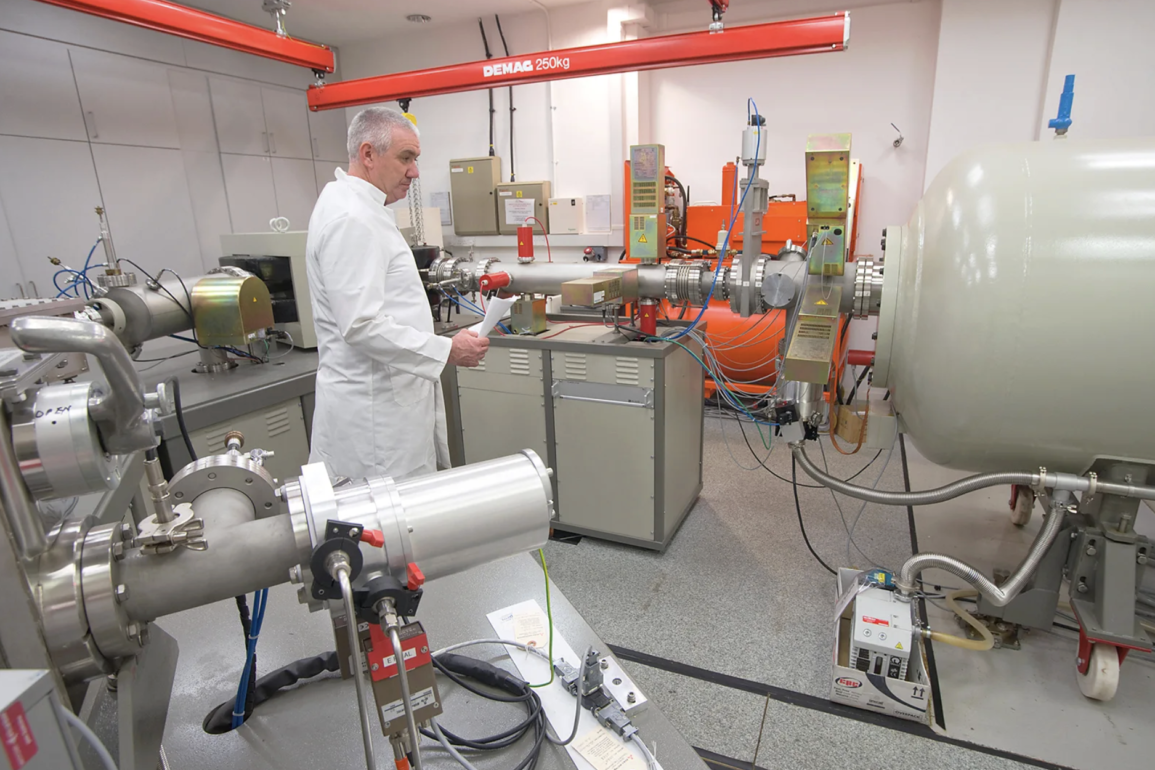When Willard Libby went looking for a radioactive form of carbon in the 1940s, he had an unusual source in mind: the sewers of Baltimore.
The American chemist suspected that sewage would be laced with carbon-14, a rare isotope formed when cosmic rays strike nitrogen in the atmosphere. If he could find it, Libby reasoned, the isotope would act as a natural clock, decaying predictably over time. Measure the remaining carbon-14 in dead plants or animals, and you could determine when they died.
He was right. Libby not only found the isotope in methane gas from Baltimore’s sewers, but soon proved its existence across a wide range of materials.
His breakthrough, radiocarbon dating, transformed archaeology, forensics and climate science, and in 1960 earned him the Nobel Prize in Chemistry. “This is a problem where you won’t tell anybody what you’re doing. It’s too crazy,” he later said. “You can’t tell anybody cosmic rays can write down human history. You can’t tell them that. No way. So we kept it secret.”
Since then, radiocarbon dating has confirmed the age of the Dead Sea Scrolls, revealed that a ship buried with the Egyptian pharaoh Sesostris III was nearly 4,000 years old, and overturned long-held assumptions about ancient human remains, such as William Buckland’s misdated skeleton in Wales — which turned out to be 33,000 years old.
“In terms of putting things in order, in terms of being able to compare between different regions in particular, and understand that pace of change, it has been really important,” says Rachel Wood of the Oxford Radiocarbon Accelerator Unit, one of the world’s leading labs to the BBC. Wood and her colleagues test everything from human bones and parchment to more unusual substances: “We do the odd really unusual thing, like fossilised bat urine.”
Unlike Libby’s early methods, which inferred carbon-14 levels from radiation, modern accelerator mass spectrometers can directly count the isotope in samples as small as a milligram. That precision has allowed radiocarbon dating to enter courtrooms and wildlife investigations.
Sam Wasser, a biologist at the University of Washington, has used the technique to track illegal ivory. “It’s extraordinarily useful,” he says. In one case, carbon-14 evidence helped convict a trafficker in Togo by proving elephants had been poached after the 1989 ivory ban.
The method has also illuminated human tragedies. In 1975, 13-year-old Laura Ann O’Malley disappeared in New York. Decades later, bones discovered in California were misclassified as historical. Only when radiocarbon analysis revealed the remains were from someone who died between 1977 and 1984, consistent with O’Malley’s disappearance, was the case resolved. DNA confirmed the match.
The hour of death
Human bodies know what time it is, even without a wristwatch. Every cell and every organ runs on circadian rhythms, keeping the body in sync with cycles of light and dark. Now, scientists are finding that those internal clocks leave a striking signature in the brain: at the moment of death, all that biological activity halts, leaving a timestamp that reveals the hour of a person’s passing.
Researchers have discovered that people who die in the morning display a different mix of active genes and proteins in their brain cells than those who die in the evening or at night, reports Carl Zimmer for The New York Times. What sounds like a morbid curiosity may, in fact, carry major medical implications. By probing how the brain’s internal clocks dictate biology and chemistry, scientists hope to find new ways to treat sleep disorders, dementia, depression and other neurological conditions.
“Sleep and activity cycles are a very big part of psychiatric illnesses,” says Huda Akil, a neuroscientist at the University of Michigan.
Akil and her colleagues examined preserved brains at the University of California, Irvine, searching for molecular signatures that corresponded to the time of death. Their study looked at the brains of 55 people who died suddenly, in car crashes or other accidents, and analyzed the genes that were “turned on” across six brain regions tied to learning, memory, emotion, and biological regulation.
They identified more than 100 genes whose activity surged or ebbed depending on the hour of the day, including genes linked to metabolism, lipid synthesis and wakefulness. Remarkably, the team could estimate the time of death within about an hour of its actual occurrence.
Inspired by Akil’s work, researchers at the University of Pittsburgh School of Medicine carried out a similar investigation. Studying 146 preserved brains, they observed distinct rhythmic patterns of gene expression. “Lo and behold, we got very nice rhythms,” said Colleen A. McClung, who led the effort. “It really seems like a snapshot of where the brain was at the moment of death.”
McClung’s team also looked at age-related differences. They found that some genes with strong daily cycles in younger brains lost their rhythmicity in people over 60. At the same time, other genes became more active with age. Their findings, published last week in Proceedings of the National Academy of Sciences, hint at how the brain’s biological clocks evolve over a lifetime.
Akil believes these changes suggest one clock winds down as another takes over in older brains — a shift that may determine how well the brain resists neurodegeneration. If true, the discovery underscores how vital circadian rhythms are for brain health.
And it offers a cautionary note: in an age of night shifts, jet lag, and late-night screens, the modern tendency to disrupt those rhythms could carry costs we are only beginning to understand.
Carbon dating and climate change
For scientists, the radiocarbon dating technology has opened windows into Earth’s climate. By studying glaciers and tree rings, researchers have mapped atmospheric carbon over thousands of years. “It’s also very useful for people who want to use climate models to predict what the climate may potentially be like in the future,” says Tim Heaton, professor of applied statistics at the University of Leeds. Those records have strengthened reports by the Intergovernmental Panel on Climate Change, awarded the Nobel Peace Prize in 2007 alongside Al Gore.
But the clock is under threat. Fossil fuels, formed from organisms that died millions of years ago, contain no carbon-14. Burning them releases massive amounts of carbon dioxide that dilute the isotope in today’s atmosphere. In a future of extreme emissions, scientists warn, radiocarbon dating could falter.
“Something that’s freshly produced will have the same [radiocarbon] composition as something that’s maybe 2,000 years old,” says Heather Graven, professor of climate physics at Imperial College London. “Radiocarbon dating wouldn’t be able to tell the two apart.”
Rachel Wood believes the problem is not imminent. But Paula Reimer, professor emeritus at Queen’s University Belfast, cautions that fossil fuels “put a damper” on the method and may one day undermine its precision. For decades she worked to refine radiocarbon curves, using painstaking measurements from tree rings to track atmospheric changes over millennia.
Those records now stretch back 14,000 years. Yet the very accuracy that made radiocarbon dating indispensable may not survive a fossil-fueled future. A clock that once rewrote history could, in time, be forced to stop.




